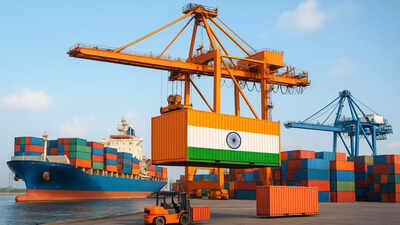The Modi government’s move to approve an Export Promotion Mission aimed at countering the impact of the global trade situation may be laced with implementation challenges, says Ajay Srivastava, founder of Global Trade and Research Initiative (GTRI).The Union Cabinet on Wednesday approved the Export Promotion Mission (EPM) to establish a structure for enhancing India’s export capabilities. The move holds significance for its timing, given how India’s exporters are facing a hit from the Donald Trump administration’s 50% tariffs.
However, according to GTRI, the initiative currently exists as a broad concept requiring detailed implementation plans, whilst its yearly allocation appears insufficient for its ambitious objectives. The programme’s effectiveness will rely on quick implementation, enhanced interdepartmental collaboration, and additional financial resources, it says.Also Read | Countering Trump tariffs impact! Modi government approves new Export Promotion Mission & credit guarantee scheme for exporters; check details
What is the Export Promotion Mission?
- The Union Cabinet sanctioned ₹25,060 crore spanning 6 years (FY 2025-26 to FY 2030-31) for the EPM.
- The mission seeks to establish a unified framework to enhance India’s export competitiveness.
- The EPM was previously announced in the 2025-26 Budget.
The EPM comprises two primary components:NIRYAT PROTSAHAN, which aims to reduce trade financing costs for MSMEs through various measures including interest assistance, export factoring, collateral guarantees, credit enhancement, and e-commerce export credit cards. Priority consideration will be given to sectors affected by recent global tariff increases, including textiles, leather, gems and jewellery, engineering goods, and marine products.NIRYAT DISHA, the second component, offers non-financial assistance encompassing export quality and compliance support, improved branding and packaging, international trade fair participation opportunities, export warehousing facilities, logistics support, and inland transport reimbursement provisions.The EPM incorporates previous programmes such as the Interest Equalisation Scheme (IES) and the Market Access Initiative (MAI).Also Read | Trump tariffs: Why India should push for rollback of Russian oil penalty before trade deal with US; 3-point strategy explained
Export Promotion Mission: What are the challenges?
GTRI cautions that the Export Promotion Mission has notable shortcomings, despite its potential.
- Since its February announcement, EPM remains at a conceptual stage, requiring detailed scheme guidelines covering eligibility criteria, operational procedures and disbursement protocols.
- Development of the digital platform is pending, potentially causing months of delay before benefits reach exporters.
- Financial constraints present additional hurdles. The allocated budget of ₹25,060 crore spread across six years amounts to under ₹4200 crore annually. Considering the Interest Equalisation Scheme alone utilised over ₹3,500 crore last year, minimal funds remain for crucial activities including branding, packaging, exhibition participation, compliance and logistics support. The financial allocation appears insufficient for the Export Promotion Mission’s scope, says GTRI.
- Organisational hurdles also exist. While DGFT holds implementation authority, financial programmes like interest subvention previously operated through banks under RBI oversight.
- These disbursements are traditionally linked with export financing. DGFT requires additional expertise for this responsibility, potentially resulting in slower processing and operational bottlenecks.








